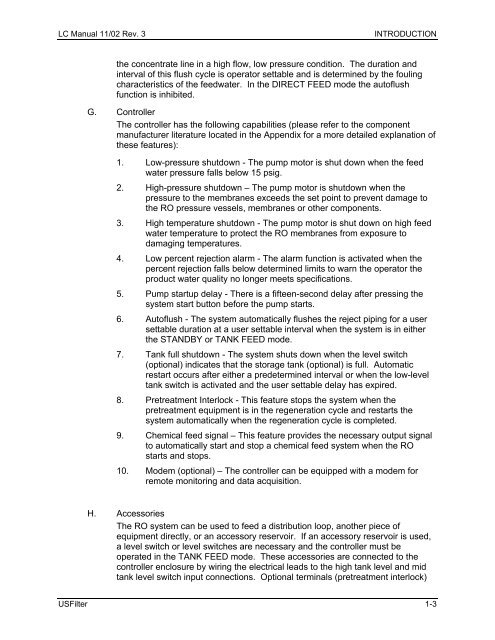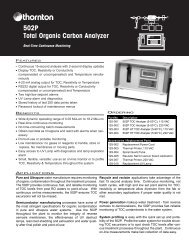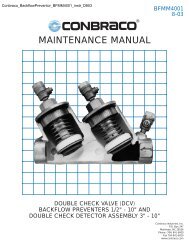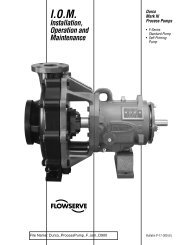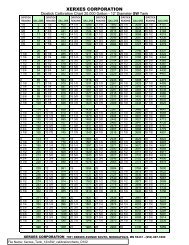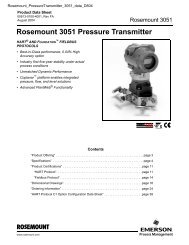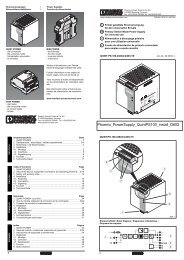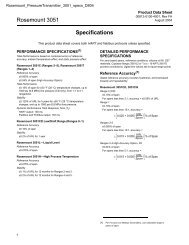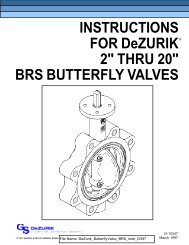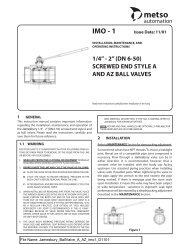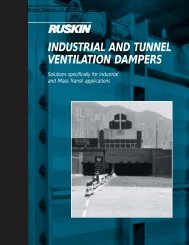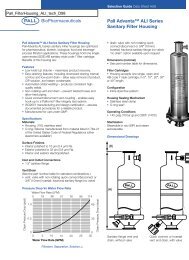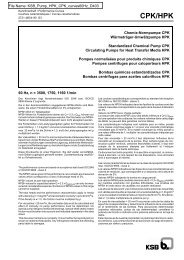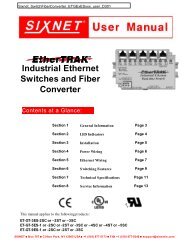Operation and Maintenance Manual for
Operation and Maintenance Manual for
Operation and Maintenance Manual for
You also want an ePaper? Increase the reach of your titles
YUMPU automatically turns print PDFs into web optimized ePapers that Google loves.
LC <strong>Manual</strong> 11/02 Rev. 3 INTRODUCTION<br />
the concentrate line in a high flow, low pressure condition. The duration <strong>and</strong><br />
interval of this flush cycle is operator settable <strong>and</strong> is determined by the fouling<br />
characteristics of the feedwater. In the DIRECT FEED mode the autoflush<br />
function is inhibited.<br />
G. Controller<br />
The controller has the following capabilities (please refer to the component<br />
manufacturer literature located in the Appendix <strong>for</strong> a more detailed explanation of<br />
these features):<br />
1. Low-pressure shutdown - The pump motor is shut down when the feed<br />
water pressure falls below 15 psig.<br />
2. High-pressure shutdown – The pump motor is shutdown when the<br />
pressure to the membranes exceeds the set point to prevent damage to<br />
the RO pressure vessels, membranes or other components.<br />
3. High temperature shutdown - The pump motor is shut down on high feed<br />
water temperature to protect the RO membranes from exposure to<br />
damaging temperatures.<br />
4. Low percent rejection alarm - The alarm function is activated when the<br />
percent rejection falls below determined limits to warn the operator the<br />
product water quality no longer meets specifications.<br />
5. Pump startup delay - There is a fifteen-second delay after pressing the<br />
system start button be<strong>for</strong>e the pump starts.<br />
6. Autoflush - The system automatically flushes the reject piping <strong>for</strong> a user<br />
settable duration at a user settable interval when the system is in either<br />
the STANDBY or TANK FEED mode.<br />
7. Tank full shutdown - The system shuts down when the level switch<br />
(optional) indicates that the storage tank (optional) is full. Automatic<br />
restart occurs after either a predetermined interval or when the low-level<br />
tank switch is activated <strong>and</strong> the user settable delay has expired.<br />
8. Pretreatment Interlock - This feature stops the system when the<br />
pretreatment equipment is in the regeneration cycle <strong>and</strong> restarts the<br />
system automatically when the regeneration cycle is completed.<br />
9. Chemical feed signal – This feature provides the necessary output signal<br />
to automatically start <strong>and</strong> stop a chemical feed system when the RO<br />
starts <strong>and</strong> stops.<br />
10. Modem (optional) – The controller can be equipped with a modem <strong>for</strong><br />
remote monitoring <strong>and</strong> data acquisition.<br />
H. Accessories<br />
The RO system can be used to feed a distribution loop, another piece of<br />
equipment directly, or an accessory reservoir. If an accessory reservoir is used,<br />
a level switch or level switches are necessary <strong>and</strong> the controller must be<br />
operated in the TANK FEED mode. These accessories are connected to the<br />
controller enclosure by wiring the electrical leads to the high tank level <strong>and</strong> mid<br />
tank level switch input connections. Optional terminals (pretreatment interlock)<br />
USFilter 1-3


